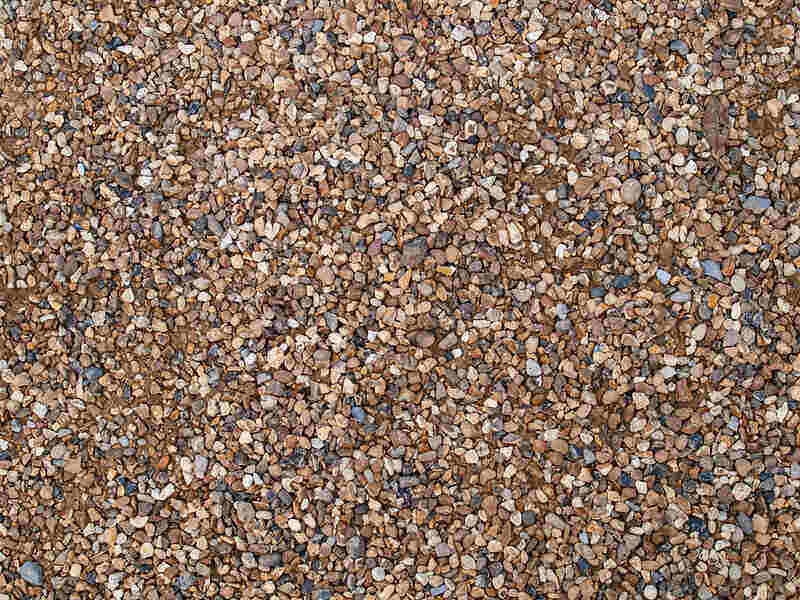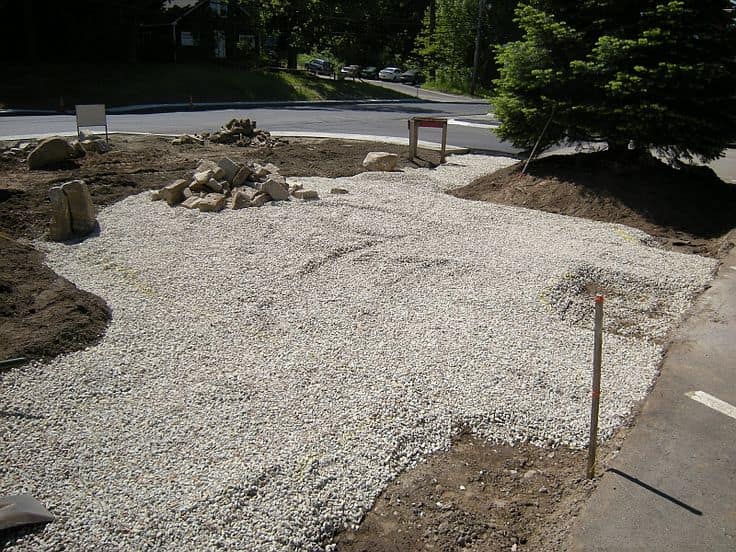Gravel Near Me – Comprehensive Guide In 2024!

Gravel is a versatile material that uses extensively in construction, landscaping, and various outdoor projects. Whether you’re building a driveway, creating pathways in your garden, or constructing a foundation for a structure, gravel often serves as a foundational element.
When embarking on a project that requires gravel, it’s essential to understand the different types available, factors to consider when choosing the right gravel, where to find suppliers of gravel near me, how to calculate quantity, tips for purchasing, installation techniques, maintenance, and its environmental impact.
This comprehensive guide provides you with the necessary information to make informed decisions regarding gravel for your projects.
Understanding Gravel Near Me:
Gravel is a mixture of small rock fragments ranging in size from granules to boulders. It is formed through the erosion and weathering of larger rocks.

Gravel is commonly composed of materials like sandstone, limestone, or basalt, and its properties, such as size, shape, and color, can vary depending on its geological origins.
Types Of Gravel Near Me – Explain!
Several gravel types are available, each with unique characteristics suited for different applications. Some common types include:
1. Crushed Stone:
This type of gravel is produced by mechanically crushing larger rocks into smaller fragments. Due to its angular edges and interlocking nature, it’s often used as a base material for driveways, roads, and pathways.
2. Pea Gravel:
Pea gravel consists of small, rounded stones typically ranging from 1/8 to 3/8 inches in diameter. It’s famous for decorative purposes in landscaping projects such as garden paths and flowerbed borders.
3. River Rock:
River rock is naturally rounded by the water flow, giving it a smooth appearance. It’s commonly used for decorative purposes in landscaping features like water features, dry creek beds, and as a mulch alternative.
4. Bank Gravel:
Bank gravel is naturally occurring gravel found in riverbanks and streams. It typically contains a mix of sand, clay, and larger stones and is often used in drainage applications and as a base material for construction projects.
5. Crushed Granite Gravel:
Crushed granite gravel is durable and often used for driveways, walkways, and drainage projects. It features a mix of angular and rounded particles, providing stability and good drainage.
Factors To Consider When Choosing Gravel Near Me:
- Purpose: Determine the intended use of the gravel, whether it’s for functional purposes like driveways and pathways or purely decorative.
- Size: The size of the gravel particles affects its stability and appearance. Smaller particles provide a smoother surface, while larger ones offer better drainage.
- Color: Gravel comes in various colors, ranging from earth tones to vibrant hues. Choose a color that complements the surrounding landscape or matches your desired aesthetic.
- Accessibility: Consider the availability of the gravel type in your area and whether it can be easily sourced from local suppliers of gravel near me.
Finding Gravel Suppliers Near You:

Finding gravel suppliers near your location is essential for convenient access to materials and timely delivery. Here are some ways to locate gravel suppliers:
- Online Search: Use search engines or online directories to find gravel suppliers in your area. Many suppliers have websites where you can browse their products and contact them for inquiries.
- Local Hardware Stores: Visit local hardware stores or home improvement centers, as they often carry a variety of gravel and other landscaping materials.
- Ask for Recommendations: Seek recommendations from friends, neighbors, or contractors recently completing similar projects. They may be able to recommend reliable suppliers based on their experiences.
Tips For Purchasing Gravel:
- Buy in Bulk: Purchasing gravel in bulk quantities is often more cost-effective than buying smaller amounts.
- Inspect the Quality: Examine the gravel for any debris, organic matter, or irregularities that may affect its performance.
- Ask About Delivery Options: Inquire about delivery services offered by the supplier, including delivery fees, scheduling, and minimum order requirements.
- Consider Additional Materials: Depending on your project, you may need additional materials such as geotextile fabric for weed control or edging materials for containment.
Installing Gravel Near Me:
Proper installation is essential for achieving a durable and aesthetically pleasing gravel surface. Follow these steps for successful gravel installation:
1. Prepare the Site:
Clear the area of vegetation, debris, and any existing materials. Grade the site to ensure proper drainage away from structures.
2. Lay a Base:
For load-bearing applications like driveways, install a base layer of crushed stone or compacted gravel to provide stability and prevent sinking.
3. Spread the Gravel:
Spread the gravel evenly over the prepared surface using a shovel, rake, or mechanical spreader. Aim for a uniform thickness to achieve a smooth, level surface.
4. Compact the Gravel:
Use a mechanical compactor or hand tamper to compact the gravel layer firmly. This helps to stabilize the surface and prevent shifting over time.
5. Edge the Area:
Install edging materials along the perimeter of the gravel area to contain the gravel and prevent spreading.
Maintaining gravel near my Surfaces:

Regular maintenance is essential for preserving the appearance and functionality of gravel surfaces. Here are some maintenance tips:
- Rake Regularly: Periodically rake the gravel surface to redistribute material and smooth out uneven areas.
- Weed Control: Apply weed barrier fabric or use herbicides to prevent weed growth in gravel areas.
- Repair Ruts and Potholes: Fill in depressions and compact the gravel as needed to repair damage caused by heavy traffic or weathering.
- Monitor Drainage: Ensure the gravel surface maintains proper drainage to prevent standing water and erosion.
- Replenish as Needed: Over time, gravel may become displaced or compacted. Add additional gravel as needed to maintain the desired thickness and appearance.
Environmental Impact of Gravel:
While gravel is a natural material, its extraction and use can have environmental implications. Some potential impacts include:
- Habitat Destruction: Gravel extraction can disrupt natural habitats and ecosystems, particularly in riverbeds and stream channels.
- Water Quality: Sediment runoff from gravel extraction sites can degrade water quality and harm aquatic life.
- Noise and Dust: Gravel mining operations can generate noise and dust pollution, impacting nearby communities and wildlife.
- Resource Depletion: Excessive gravel extraction can deplete natural resources and lead to habitat loss for wildlife.
To mitigate these impacts, adhering to regulations and best practices for sustainable gravel extraction and use is essential.
Conclusion:
Gravel is a versatile material with numerous applications in construction, landscaping, and outdoor projects. By understanding the different types of gravel, factors to consider when choosing, and proper installation and maintenance techniques, you can achieve successful outcomes for your projects while minimizing environmental impact.
Whether you’re building a driveway, creating pathways, or enhancing your landscape, gravel offers durability, functionality, and aesthetic appeal.
FAQ’s:
1. What are the different uses of gravel?
Gravel is commonly used for driveways, pathways, landscaping, drainage systems, and as a base material for construction projects.
2. How do I determine the right type of gravel for my project?
Consider the intended use, desired appearance, size, color, and availability when choosing gravel for your project.
3. Where can I buy gravel near my location?
You can find gravel suppliers through online searches, local hardware stores, or by asking for recommendations from friends or contractors.
4. How much gravel do I need for my project?
Calculate the quantity of gravel needed based on the area’s dimensions and desired depth using an online gravel calculator or consulting with a supplier.
5. What are some tips for maintaining gravel surfaces?
Regularly rake the gravel surface, control weeds, repair damage, monitor drainage, and replenish gravel to maintain appearance and functionality.




